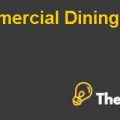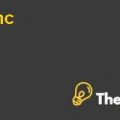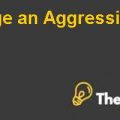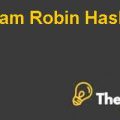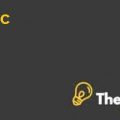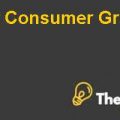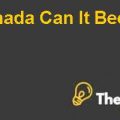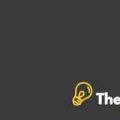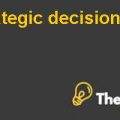Introduction
The paper attempts to provide the internal and external analysis of Starbucks through the implication of SWOT analysis, VRIO analysis, and Porter’s five forces model. The paper also attempts to provide the problem statement of the Starbucks case along with the value proposition of the company. Furthermore, the paper provides alternative suggestions to the problem while describing the pros and cons for each alternative. Lastly, the paper provides recommendations for solving the problem statement of the company.
Problem Statement
While increasing the brand image of the company, Starbucks have been focusing on growing its business by introducing new products. However, in the midst of rapid business expansion and increased retail stores, the company has become weak in satisfying its customers. The connection is lost between satisfying the customers and growing the business. Christine Day, the senior vice president of Starbucks has recommended that the company shall invest an additional $40 million to increase the labor hours per week which can ultimately increase the speed of service, and hence increase in customer satisfaction. Although, the plan met internal resistance, Christine Day has to present final recommendations to the CEO of the company to increase customer satisfaction.
Internal Analysis
SWOT Analysis
Strengths
Starbucks is a well-established brand and its revenues have been increasing by 5% each year. The company has shown consistency in the quality of its brands which is why a perception is built amongst customers that it is the America’s third place after home and work. The work environment is valued by the company’s employees as Starbucks have the highest employee satisfaction rate by 80% to 90% while having the lowest turnover rate. Starbucks have over 5,500 global stores and has a strong international presence.
Weaknesses
Starbucks has been focusing more on growing its business due to this the company has stopped following its customers. The Company’s strategy has shifted from customer-oriented approach towards growth-oriented approach, which has resulted in the loss of customers and has increased dissatisfaction. The prices of its products were continuously rising due to which customers were switching from Starbucks to other low cost coffee houses after recession. . The company had no chief marketing officer due to which Starbucks lacked the decision making ability in the marketing department. Moreover, the speed of service which was the core unique selling proposition of the company has declined.
Opportunities
The rising coffee consumption around the world has also increased the demand for Starbucks as it is considered a top brand and therefore it provides an opportunity for the company to expand in different countries. Rapid retail expansion from the company is an opportunity towards fulfilling the demand across the globe.
Threats
There, is a rising competition because of the increase of many specialty coffee shop offerings. Also, many specialty coffee producers have been offering coffee for a price better and lower than Starbucks. There is an image developed in the mind of a consumer that Starbucks care about their customers just to earn money. This image of commercialization has badly affected the image of the company because the company whose primarily concern has been customers’ satisfaction, was been turned away for making more money in the name of customer relationship management.
Starbucks Delivering Customer Service Case Solution
VRIO Analysis
The core competitive advantage of Starbucks against its competitors is providing the consistent product quality to its customers. For all these years Starbucks has gained the trust of its customers on the basis of product quality. The core competency of the company has been placed in the third row which illustrates that the particular strength is rare. However, it is not difficult nor costly to imitate. The analysis shows that the particular strength is also substitutable. By combining these factors, it is concluded that the company shall gain temporary competitive advantage and temporary competitive returns. Although, many companies have tried to apply the similar concept and business model as Starbucks, but have failed to deliver an exceptional product quality on regular basis. If the company continue to provide the same quality through many years then its customers would become loyal. Although, this was the reason why Starbucks did not fail in the economic downturn because it had set the approach in the mind of its customers that Starbucks is their third place after home and office..........................
This is just a sample partial case solution. Please place the order on the website to order your own originally done case solution.
Starbucks, the dominant specialty coffee brand in North America, must respond to recent market research that the company did not meet the expectations of customers in terms of service. To increase customer satisfaction, the company is discussing a plan that would increase the amount of labor in the stores and theoretically increase the speed of service. However, the impact of the plan (which will cost $ 40 million per year) on the company's bottom line is unclear.
This event is accompanied by a short video for Premium Teachers to show in class. To view the video, or to show the students, click on the video icon. "Hide
Youngme on the Moon, John A. Quelch Source: HBS Premier Case Collection 20 pages. Publication Date: July 31, 2003. Prod. #: 504016-PDF-ENG

